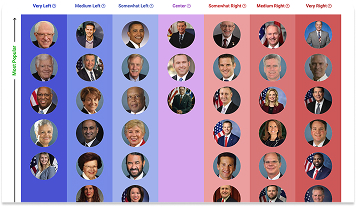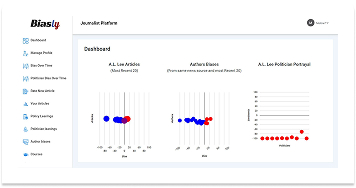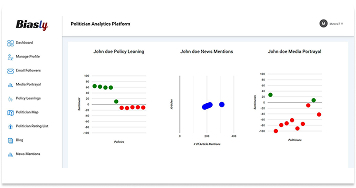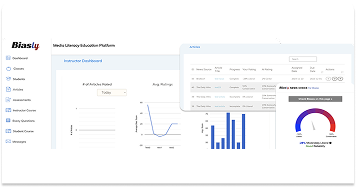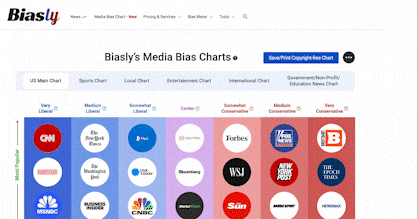Bias Meter
Extremely
Liberal
Very
Liberal
Somewhat Liberal
Center
Somewhat Conservative
Very
Conservative
Extremely
Conservative
-100%
Liberal
100%
Conservative
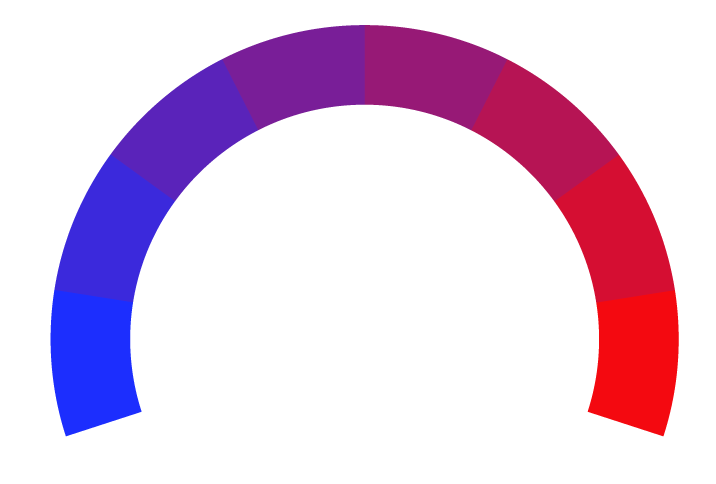
Biasly determines media bias ratings through a dual-layered approach combining artificial intelligence and analyst review. The platform’s proprietary bias detection engine, Bias Meter, evaluates sentiment, policy position alignment, and language framing across thousands of data points in news articles. Analysts then verify and interpret the AI’s findings, providing additional context where needed. Learn more
- Profile
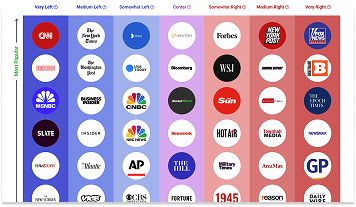
The Scottish Sun on the media bias chart
The Scottish Sun has a Bias Score of -10% Center which is based on a variety of factors including its policy and politician leanings, article ratings, and the use of biased language. Its Reliability is rated as Average, and additional analytical insights are available in the other tabs.
- Bias Rating
-10% Center
- ReliabilityPolicy Leanings
-6% Center
Extremely
LiberalVery
LiberalModerately
LiberalSomewhat Liberal
Center
Somewhat Conservative
Moderately
ConservativeVery
ConservativeExtremely
Conservative-100%
Liberal100%
Conservative
Average Reliability
*Our bias meter rating uses data science including sentiment analysis, machine learning and our proprietary algorithm for determining biases in news articles. Bias scores are on a scale of -100% to 100% with higher negative scores being more liberal and higher positive scores being more conservative and 0% being neutral. The rating is an independent analysis and is not affiliated nor sponsored by the news source or any other organization.
Politician Portrayal48% negative
Continue For Free
Create your free account to see the in-depth bias analytics and more.
By creating an account, you agree to our Terms and Privacy Policy, and subscribe to email updates.
Policy Leanings Analysis
Policy | Bias score |
|---|
The Scottish Sun Editorial Patterns
The Scottish Sun’s coverage of political topics often reflects a Center bias, with consistent patterns in phrasing, source selection, and thematic focus that is Neutral. While the publication demonstrates journalistic standards in many of its reports, the choice of issues, framing, and word usage can indicate a political slant. This content analysis examines how The Scottish Sun handles liberal and conservative issues and evaluates its language choices and editorial tendencies.
Coverage of Liberal vs. Conservative Topics
The Scottish Sun has been shown to cover both liberal and conservative topics.
The Scottish Sun, a U.K.-based newspaper, has recently published many articles on the former First Minister, Nicola Sturgeon. She is a member of the Scottish National Party (SNP), which aligns with liberal principles.
In a recent article, titled “‘FAR TOO LATE’ Nicola Sturgeon makes shock Isla Bryson admission in another partial U-turn in new book,” the author discusses gender identity and laws surrounding it. It talks about how Sturgeon has changed her view on whether sex offenders should be allowed to switch their gender. However, she is berated as people believe she only changed her view to increase interest in her upcoming book. Overall, this article presents a range of views on gender identity, with criticism or bias primarily directed at Sturgeon rather than specific political beliefs.
In another recent The Scottish Sun article, the author writes in support of Sturgeon’s “non-binary” sexuality. The article discusses how the terms lesbian and gay are not meant to be insults, a more left-leaning view.
Policy and Issue Framing
The policy analysis of The Scottish Sun aligns with a ‘Center’ bias rating. The newspaper covers a wide range of topics such as abortion, anti-discrimination laws, Black Lives Matter, border control, environmental regulations, the death penalty, etc
The anti-discrimination laws, Black Lives Matter, and Border Control policies have all been shown to lean center in The Scottish Sun’s portrayal of these topics. These topics are written in a more direct, matter-of-fact way.
For abortion, the death penalty, and environmental regulations, their leanings are rated as Somewhat Left to Medium Left. These more left-leaning topics are covered in a more empathetic, supportive, and inclusive tone.
Coverage and Relevance
The Scottish Sun’s reporting often touches on key issues central to the media political bias discussion. It covers politics not only in Scotland, but also in the world. Its website features dedicated sections for Politics, Scottish News, and World News..
The source also provides articles on health, travel, money, TV, sports, and other topics. Furthermore, it even provides an Opinion section with a range of viewpoints, providing different views on trending topics. Overall, The Scottish Sun does provide extensive coverage of relevant issues around the world.
The Scottish Sun Bias Analysis
The Scottish Sun is an offshoot of The Sun and was first published in 1987 by News, a company owned by global media mogul Rupert Murdoch. The aim was to provide a Scotland-centric version of the widely popular British tabloid, The Sun.
Today, the newspaper is still owned by News Group Newspapers, a subsidiary of News UK, which is owned by Murdoch’s News Corp. Based in Glasgow, Scotland, The Scottish Sun covers a wide array of topics, including News, Politics, Sports, and Entertainment.
The Scottish Sun holds a Guinness World Record for giving away £4 million worth of books in a promotion, highlighting its commitment to literacy.
Is The Scottish Sun Biased?
Based on Biasly’s evaluations, The Scottish Sun is rated as Center.
By examining content patterns and the broader context of media influence, we aim to offer a balanced perspective on The Scottish Sun’s political bias—and contribute to the ongoing discussion about bias in the news.
How Does Biasly Rate News Sources?
Biasly uses proprietary algorithms and a team of analysts to provide comprehensive bias evaluations across thousands of news outlets. Over 200,000 articles from more than 3,200 sources have been analyzed to identify the most accurate and unbiased stories.
Biasly assigns each outlet three key scores:
- Reliability Score – Reflects factual accuracy
- AI Bias Score – Generated via natural language processing
- Analyst Bias Score – Assessed by human political analysts
These scores are based on seven core metrics: Tone, Tendency, Diction, Author Check, Selection/Omission, Expediency Bias, and Accuracy. These elements help analysts and algorithms evaluate the political attitude conveyed by each article.
Biasly’s Bias Meter ranges from -100% (most left) to +100% (most right), with 0% indicating neutrality. The system evaluates individual articles based on political terms, policies, figures, and sentiment to calculate precise bias ratings.
Is The Scottish Sun Politically Biased?
The Scottish Sun earns a Center rating for its AI Bias Score and Center rating as its Analyst Bias Score. Reviewers from liberal, moderate, and conservative backgrounds generate the Analyst Bias Score. Analysts reviewed 15 The Scottish Sun articles and noted preferences in areas like coverage of liberal politicians and policy topics such as abortion rights and clean energy. However, the paper maintained objectivity on issues like education and national security.
The Scottish Sun appears to exhibit some bias in its articles, yet balances this out by presenting opposing viewpoints. This organization tends to lean toward both sides, maintaining a center bias.
To evaluate bias, we can analyze selected The Scottish Sun articles through several of Biasly’s bias rating criteria: Tone, Diction, and Expediency Bias.
- Tone: The overall attitude conveyed by the article
- Diction: The writer’s specific word choices
- Expediency Bias: Quick visual or textual indicators (i.e., headlines and photos) that imply bias
It is essential to look at these three things when analyzing articles. An author’s tone, word choice, and even headline/photo choice provide much insight into possible bias.
Analysis of Bias in The Scottish Sun Online Articles
For The Scottish Sun, there are a few articles that reveal this source’s choice in topic coverage and possible bias in its language.
This recent article about Donald Trump’s final stop in Scotland before his departure shows certain biases in both its tone and language choices.
The tone is mainly neutral in reporting the factual elements of Trump’s visit, such as his meeting with dignitaries, the private dinner, and the course opening at Trump International in Menie. However, there are moments where the language hints at a subtle approval of Trump’s political positions.
For instance, the reference to Trump’s criticisms of wind power as “ugly monsters” and his calls for tax cuts and stricter immigration policies present him in an intense, assertive light. This emphasizes his conservative stances without substantial critique. However, it also provides insight from critics who said that the Trump developments in Scotland were not as beneficial as promised, and that environmental damage had been caused because of it.
This second article clearly demonstrates a right-leaning bias in its coverage of the situation involving asylum seekers housed at a four-star hotel in West London. The tone of the article is heavily critical of the government’s handling of the asylum issue, with phrases like “What a cover-up” and “utter failure on immigration” conveying frustration and disapproval.
The removal of Hilton signs from the hotel is framed as an attempt to “hide” the hotel’s involvement with asylum seekers, which aligns with the article’s broader narrative that this is an underhanded or misleading move by both the Home Office and Hilton. The article also quotes concerned locals and former Tory ministers who criticize the decision, contributing to the framing of the situation as a negative development.
The mention of “luxurious” accommodations contrasts sharply with the Home Office’s financial expenditures, fueling an argument that taxpayers are being burdened with expensive accommodations for migrants while ordinary citizens struggle.
Overall, the article portrays immigration policy as inefficient and harmful to local communities. This framing aligns with a right-wing position critical of both the current government and its handling of asylum seekers. The lack of alternative viewpoints or exploration of the broader complexities of immigration policy reflects the article’s strong ideological slant.
There is a particular tone and diction present in these two articles that give off a slightly biased perspective. Now we will further explore bias in The Scottish Sun’s opinion articles.
Analysis of The Scottish Sun Opinion Articles
To fully understand political bias in media, it’s important to distinguish between factual reporting and opinion pieces. While reporting aims to present facts and let readers form their own conclusions, opinion articles express personal viewpoints on current issues. Although the previous section examined factual reporting, this section turns to how bias surfaces through The Scottish Sun’s selection and tone of opinion content.
An opinion piece by Zara Janjua discusses the artist Sabrina Carpenter and her new provocative album. The author shares how Sabrina Carpenter isn’t the problem; instead, she claims that the women who vilify her are the real issue. The piece takes a feminist approach, clearly singling out a more liberal leaning bias.
Another opinion piece by Joanna Williams is titled, “As CBeebies list trans sex workers as ‘inspirational moms,’ I ask: Why is the BBC grooming and sexualising our children?”
This piece shares concerns about sexualized content for children, specifically focusing on content endorsed by the BBC. The opinion in the piece condemns calling trans sex workers inspirational and further attacks the prevalence of sexualized content presented to children. The views in this article definitely take a more right-leaning approach, typically aligning with the conservative point of view.
Although opinion sections are typically biased, SOURCE_NAME_% includes opinion pieces from both liberal and conservative perspectives.
Who Owns The Scottish Sun?
The Scottish Sun is published and owned by News Group Newspapers, which is part of News UK & Ireland Ltd. It was first published in 1987 and is based in Glasgow, Scotland.
Currently, Gill Smith is the Editor, Helen Philpot is the Managing Editor, and the Chief Executive of both News UK & Ireland Ltd. is Rebekah Brooks.
According to its website, The Scottish Sun has been a campaigning newspaper since its beginning. It also makes its political stance clear, stating:
“Politically, The Scottish Sun stands for ordinary working people looking to get on, building better lives for themselves and their families, regardless of where they grow up or which school they went to.”
Additionally, The Scottish Sun shares its journalistic standards and initiative to achieve the highest standards of accuracy in its reporting. You can learn more about these standards here.
How to Evaluate Bias
Although Biasly rates The Scottish Sun as Center, it’s important to remember that bias can vary from article to article. The Scottish Sun also covers a conservative-leaning state with objectivity on many issues, from state legislation to social developments. This complexity underscores the importance of examining each article individually. So, let’s learn how to evaluate media bias.
Recognizing media bias requires awareness and critical thinking. Often, readers trust news sources that affirm their existing beliefs—a psychological tendency known as confirmation bias. This makes it harder to identify slanted narratives or one-sided reporting.
To combat this, it’s essential to challenge your assumptions by consulting multiple viewpoints and verifying news through third-party analysis. Tools like Biasly’s media bias ratings allow readers to compare the same news story across the political spectrum.
Ultimately, bias lies not only in what is said but also in what is left out, how topics are framed, and which stories are chosen for coverage. Learning to recognize these patterns can help readers make more informed decisions and develop greater media literacy.
To start comparing news outlets and gain a better understanding of bias, sign up for Biasly’s Media Bias & News Analytics Platform to see how stories vary between sources.
The Scottish Sun Reliability Analysis
Is The Scottish Sun Reliable?
The Scottish Sun has a rating of Average reliability. This rating is influenced by the quality, quantity, length, uniqueness, and diversity of sources used.
The Scottish Sun has, however, been involved in some controversy. For example, there have been U.K. campaigns to ban The Scottish Sun over the years. Here is a link to one of them. Particularly, The Scottish Sun has been accused of sensationalizing and glorifying death on multiple occasions. The way The Scottish Sun covered the 1989 Hillsborough disaster showed its true colors at the time. In fact, in 2017, Liverpool FC banned the Sun journalists from their grounds.
This does not necessarily imply that The Scottish Sun is currently unreliable. It simply provides essential information on the company’s past. We will now explore how reliability is evaluated in order to give a fair, unbiased assessment of The Scottish Sun’s reliability.
How to Evaluate Reliability?
Reliability refers to how trustworthy or accurate a news source is. If we can’t trust what we read, then continuing to consume content from that outlet serves little purpose. So how do we evaluate a news outlet’s reliability?
There are several potential measures of reliability to consider when evaluating a media source’s reliability. Red flags for an unreliable article can include the presence of wild unsubstantiated claims, facts dependent on other unreliable sources, heavy use of opinionated language, and more. In contrast, hallmarks of a reliable source include:
- Absence of subjective language
- Citing credible sources (e.g., .gov, .edu, academic references)
- Verifiable facts and statistics from multiple outlets
- Use of primary sources, like interviews or transcripts
- Consistency with coverage across other platforms
Biasly’s reliability scores incorporate these elements in evaluating media outlets.
So, How Does The Scottish Sun Fare in Its Reliability?
The political reliability index developed by Biasly assesses both accuracy and trustworthiness. The Scottish Sun currently holds Average Reliability Score, which is calculated as a weighted average of:
- Fact Analysis Score – Evaluates the accuracy of claims, facts, and evidence.
- Source Analysis Score – Assesses the number, diversity, and credibility of sources and quotes used.
The Scottish Sun’s Source Analysis Score is rated Average.This suggests moderate trustworthiness in its sourcing practices. The score is AI-generated and considers quote length, frequency, diversity, and quality.
The Fact Analysis Score is yet to be finalized. This score will further determine how well The Scottish Sun supports its claims, addresses selection and omission bias, and presents verifiable evidence. Until this is available, readers are encouraged to perform their own evaluations using Biasly’s media bias tools.
While The Scottish Sun leans toward factual reporting, occasional lapses, such as unbalanced viewpoints or incomplete data, can affect its reliability rating. These nuances emphasize the importance of analyzing individual articles.
The Scottish Sun’s Accuracy and Reliability
According to Biasly’s analysis, The Scottish Sun maintains Average Reliability Score, but individual articles may vary significantly. Let’s dive into the details.
Political orientation plays a crucial role in how audiences perceive reliability. The Scottish Sun has been accused of favoring a slightly liberal narrative, potentially at the expense of factual reporting. To validate such claims, it’s essential to analyze whether the publication backs its assertions with sufficient evidence and diverse viewpoints.
Biasly’s reliability rating system is based on a simple percentage scale with 1 percent being the least accurate and 100 percent being the most accurate. These ratings are determined by counting the number of credible sources used by that publication on average. For Average, the average reliability is rated as average.
In general, articles with a higher bias score lower on the accuracy scale, while less biased articles score higher. Because The Scottish Sun is a relatively moderate source with a variety of viewpoints in its writers, some The Scottish Sun articles rated on Biasly tend to range from “average” to “good” reliability. These changes in reliability can often be attributed to the presence of selection and omission bias in the articles. This means articles intentionally leave out or include information that might sway readers to a particular way of thinking on the topic.
Analysis of Reliability in The Scottish Sun’s Online News Articles
The Scottish Sun’s online reporting demonstrates a tabloid-influenced style with a focus on high-impact headlines and emotionally charged language. However, within the body of the articles, the outlet often provides verifiable facts and cited sources, especially in coverage of serious news topics.
One example is the article “Neo-Nazis who hoarded weapons & planned mosque terror attack facing jail,” which reports on a criminal case involving far-right extremists. The article uses strong, evocative language in the headline, such as “hoarded weapons” and “terror attack,” which may frame the content dramatically. Yet, the reporting itself presents quotes from law enforcement and judicial proceedings, offering detailed factual information about the individuals involved, the charges, and the planned attack. The emotional tone may slightly exaggerate urgency, but the information is verifiable and grounded in public records, aligning with a standard of factual accuracy.
A contrasting article, “Hundreds of civil service jobs moving to Scotland with 3 cities set to benefit,” covers government employment plans. The piece maintains a more neutral tone, highlighting the UK government’s Levelling Up initiative and including quotes from officials. The report describes the geographic and economic impact of the job relocation and names the cities affected, demonstrating a straightforward approach to reporting without apparent ideological slant or opinion injection.
Together, these examples reflect The Scottish Sun’s tendency to present stories with attention-grabbing framing while relying on factual content in the body of the reporting. It generally upholds factual reporting standards, making it moderately reliable, though sometimes emotionally skewed in presentation.
Quality of Sources and Facts Used
The quality of sources and facts used is also essential in determining a site’s reliability.
For The Scottish Sun, its overall source analysis score is listed as average.
The quote length, unique source usage, and opposite source usage are all listed as “average” as well. However, its usage of multiple quotes and multiple sources is listed as excellent.
As an example, one of their articles, “Nicola cops refer themselves to police watchdog over previous contact with mum,” has a source analysis score of good. This article discusses the sad death and disappearance of Nicola Bulley.
The article provided nine quotes of average length. Additionally, the article provides information from reliable sources relevant to the case:
- The Lancashire Police
- Independent Office for Police Conduct
- Paul Ansell (Nicola’s partner)
- Nicola’s Extended Family (remained anonymous in news report)
The article primarily relies on primary sources, which are highly valid and enhance its reliability. The sources are family members and officials closely involved with the investigation.
Selection and Omission Bias
Other choices can affect the audience’s perception of reliability. For example, how organizations choose stories to focus on and what they choose to include in them.
Two common types of bias that affect factuality include:
- Selection Bias – Highlighting or omitting stories to fit a particular narrative.
- Omission Bias – Leaving out differing perspectives or relevant details to skew perception.
As we can see from past examples, The Scottish Sun focuses on both conservative and liberal topics.
An article discussing a potential peace deal between Trump and Putin may exhibit selection bias. While it does share quotes from other perspectives, such as Putin and Dmitry Kozak, it takes Trump’s perspective for the most part. The article appears to endorse the U.S. administration’s plans without devoting much attention to others’ perspectives.
Another recent article, discussing “Israel mobilising 400,000 troops for ‘full occupation’ of Gaza in WEEKS in Netanyahu’s plan to end war,” could be seen to have a left-leaning selection and omission bias.
It shares quotes and statements about Israel’s plan to end the war. It then shares criticisms of this plan, which typically align with the left side of politics:
“But his plans have been criticised by many international leaders, including British Prime Minister Keir Starmer, and at the UN Security Council. They have warned that widening the war, which Gaza’s health ministry claims has cost 60,000 lives, would only serve to worsen the humanitarian situation.”
Furthermore, the article has not shared information from a different point of view. It does not discuss Palestine’s actions toward Israel, which can be seen as an omission.
So, is The Scottish Sun Reliable?
Overall, The Scottish Sun can be considered to be an outlet that is moderately reliable. It demonstrates a consistent goal of journalistic integrity and typically supports claims with sources and quotes. Occasional omissions and framing bias do appear, particularly on culturally sensitive or partisan issues.
As media literacy improves, readers can more easily detect issues with selection bias, omission bias, and factuality. To strengthen your ability to assess reliability across the political spectrum, use the News Bias Checker to compare how multiple outlets report the same story.
This empowers you to consume more accurate, balanced, and dependable news.
Additional Insights
News Source Comparison
When it comes to news source comparison, The Scottish Sun is often evaluated alongside other regional and national outlets that lean center-left. Sources like TIME, The BBC, and The Economist often present similar tones. While The Scottish Sun maintains a Center media bias, it differs from strongly partisan sources in that it occasionally includes opposing viewpoints and strives for regional coverage balance.
This puts it in contrast with more biased media outlets that present consistently one-sided narratives without factual counterpoints. Readers seeking balanced political coverage may compare The Scottish Sun’s framing of issues with outlets rated as Center or Lean Left on our Media Bias Chart, or explore other regional papers on our Similar Sources page.
Notable Contributors and Authors
The Scottish Sun retains a distinctive tabloid flair, supported by a wide network of writers, editors, and contributors — many of whom are prominent in Scottish journalism and popular culture. Here’s a look at some noteworthy names who define its bylines and editorial tone:
- Chris Musson — Associate Editor: Musson holds a key editorial role and frequently shapes content around politics and commentary. His influence helps steer The Scottish Sun’s editorial voice in a pragmatic, direct direction.
- Conor Matchett — Political Editor: Known for his award-winning journalism, Matchett brings gravitas to political coverage, delivering insider-informed stories grounded in Scotland’s political landscape.
- Heather Lowrie — Travel Editor: With nearly 25 years at the publication, Lowrie curates standout travel features, offering insight into Scotland’s leisure and tourism along with broader travel trends.
- Robert Martin — Veteran Football Reporter: Reporting for The Scottish Sun since 2005, Martin has covered Scottish football with deep insight and long-term perspective, becoming a reliable voice in sports journalism.
Notable Former Editors & Columnists
- Gordon Smart — Former Editor: Smart served as editor of The Scottish Sun before stepping down in 2016. His tenure was characterized by tabloid vigor and editorial energy, reflecting the broader Sun ethos.
- Jim Delahunt — Columnist and Sports Pundit: A beloved figure on screen and in print, Delahunt writes columns on betting and racing, combining lighthearted wit with sports insight.
Related Tools and Resource Pages
To better understand how The Scottish Sun fits into the broader media landscape, we recommend exploring these helpful resources:
- Media Bias Chart: See where The Scottish Sun ranks among hundreds of media outlets across the political spectrum.
- Political Bias Chart: Visualize political slants of news sources across various policy areas.
- Journalist Bias Analytics Platform: Explore how individual journalists contribute to bias within their publications.
- Politician Bias Analytics Platform: Compare how politicians are framed differently by The Scottish Sun and other outlets.
- Media Literacy Education Platform: Learn how to critically assess media sources, bias techniques, and news reliability.
Frequently Asked Questions
The Scottish Sun is rated as Center based on Biasly’s media bias algorithm, which assesses sentiment, article framing, and policy favorability.
There was widespread disagreement on how The Scottish Sun handled its reporting of the Hillsborough disaster. You can find more information about it here.
Biasly uses a combination of AI sentiment analysis and human analyst review to assess tone, fact accuracy, source quality, and media bias indicators. Learn more on our Bias Meter page.
Yes, but with caution. The Scottish Sun typically upholds journalistic standards, though occasional left-leaning framing and selective reporting may impact overall news reliability.
Ratings are based on recent news using data science and A.I. technology.
Military Spending
| Date | Sentiment | Associated Article | Snippet |
|---|---|---|---|
| 08/25/2019 | 75% For | Trump Family Detentions Flores Agreement (link) | So, of course, the Trump administration is doing the opposite in a baldfaced |


























